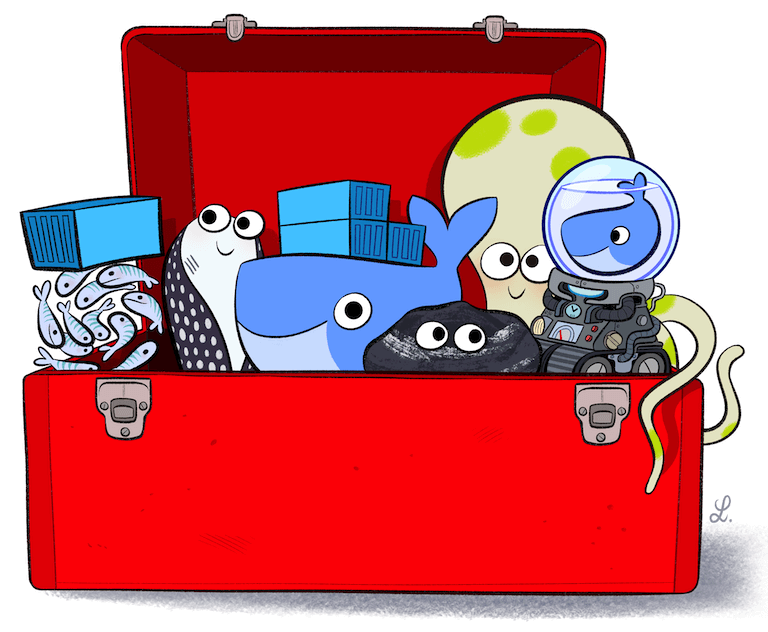Application development is seemingly getting more and more complex every day. While those complexities can lead to better end-user experiences, they can also hamper your overall productivity. Without a doubt, effective tooling helps you tackle these challenges much more easily. Good tools are user-friendly, work cross-platform, and have multi-language support.

Additionally, the best tools are actually enjoyable to use while keeping you seamlessly engaged. This is what makes integrated platforms so valuable to application development — but, how do you recognize a good solution when you see it?
Here’s what you should look for while evaluating tools and platforms.
1) Collaborative and User-Friendly Environments
Whether you’re working within one unified workspace or many, fostering strong collaboration is essential. Development projects have many stakeholders. They also — for individual features and especially entire products — rely on contributions from numerous team members.
This is where development environments come in handy. Environments help teams transition cohesively between tasks, projects, and milestones along their roadmaps. They also help developers manage application source code end-to-end. Your search for an ideal development environment should include those that bundle development, staging, and production servers. Additionally, look for all-encompassing environments that can reduce your overall tooling footprint. Prioritize the following environment features:
- Task automation
- Writing
- Testing
- Debugging
- Patching
- Updating
- Code compiling
- Code merging
- Viewing of in-progress code and peer review
Each snippet of application code is vital, which makes sharing so helpful. Additionally, environments that can support multiple repositories like GitHub, GitLab, or Bitbucket help teams code more effectively. You might also leverage different technologies with their own requirements. Wouldn’t it be great if numerous functions could be integrated within single solutions (like an IDE, for example)?
Overall, you’ll want an environment that helps you tackle your day-to-day tasks. It should welcome all technical stakeholders. It should also be something that you enjoy using on a daily basis. Great tools reduce friction — and the idea that environments can bring a smile to your face isn’t so far fetched. Remember to first create a “needs” checklist and evaluate your workflows before committing (no pun intended).
2) Kubernetes Compatibility
What makes Kubernetes (K8s) so important? Currently, there are over 3.9 million global K8s developers worldwide. This adoption is growing in lockstep with microservices and containerization. It’s not surprising that Kubernetes is the world’s leading container-orchestration platform.
In fact, 67% of respondents from last year’s Cloud Native Computing Foundation (CNCF) survey use K8s in production. Globally, 31% of backend developers also leverage K8s, so there’s a pretty good chance you do, too. If you need Kubernetes integration, you’ll want tools or platforms with it baked in.
3) Wide-Ranging OS and Hardware Support
It seems obvious, but any development tool must be compatible with your machine to be useful. You’ll need to choose the correct download package for your desktop OS — whether you’re running Windows, macOS, or a Linux distro.
From a collaborative standpoint, any application that supports all major operating systems is much more valuable. That flexibility means that developers with varied workstation setups can use it — and it even helps drive adoption. It’s much easier to lobby for your favorite developer tool when everyone can use it. Plus, working alongside other developers on one platform is much easier than building a “bridge” between two radically different, OS-specific tools.
OS aside, many apps have binaries tailored to specific hardware components — like Apple’s M-series Arm processors. Alternative packages may favor x86 architectures. These customized installs can deliver performance optimizations that you wouldn’t get from a universal install. They’re also integral to granting applications low-level permissions and system access needed to work effectively.
4) Multi-Language Support
Before containers, you had to install your desired language or framework locally on your development machine. This often entailed proprietary package managers unique to each language. Unfortunately, failed version upgrades could leave a particular language unusable and hard to remove. This can bloat any OS over time — and eventually require a fresh install.
Today, there are hundreds of programming languages of varied popularity. No tool can support all of them, but the right tool should support the heaviest hitters — like JavaScript, Python, Java, C, C++, C#, PHP, and others. Even five years ago, many developers reported using seven languages on average per project.
The most important language is the one you’re currently using. And that can change quickly! Consider that Swift and Rust are highly-desired languages, while Kotlin is also gaining steam. Your tools should let you grow and expand your development skill set, instead of being restrictive. Development is often an exploratory process, after all.
5) Easy Debugging
Writing functional code is challenging, but writing “clean” code can be even harder. Even the best developers make mistakes, and those little gremlins become increasingly harder to uncover as source code expands. Software bugs can take a massive amount of time to pinpoint (and fix) as development progresses — consuming up to 50% of a developer’s total bandwidth.
You also have to keep your users in mind, as coding issues can adversely affect your core services. Unfortunately, a missed bug can cause outages and impact people in very real ways. It’s therefore important to remember that bugs can have serious consequences, which makes debugging so critical for all users.
The right tooling should streamline this process. Shift-left testing and real-time linting are good approaches for catching pre-production issues. Devs are doing a better job here overall, but there’s still room for improvement. For example, a developer typically creates 70 bugs per 1,000 lines of code. Fifteen bugs reach end users in production, from there.
Since fixing a bug can take 30 times longer than writing a line of code, automation, collaboration, and targeted debugging features are crucial. You can pour every bit of debugging time you get back into other development tasks. Then, you can focus on shipping new features and improving user experiences.
6) Seamless Tech-Stack Integration
In this bring-your-own-stack (BYOS) world, it’s easy to encounter fragmentation while using platforms and applications in a piecemeal manner. These approaches often require workarounds or, at best, make you hop between windows to get work done.
In that sense, integration doesn’t just mean that one tool or technology meshes well with another. Complete integration describes a scenario where multi-platform functionality is possible through one single interface.
Bouncing between apps for even mundane tasks is frustrating. That’s why API-driven services platforms have become so popular — and why major vendors have opened up their ecosystems to partners or community developers. Your platform should boost your productivity and welcome external integrations with open arms. Similarly, they should fit into your internal and production environments.
This is important if you’re an indie developer or open-source contributor. However, it’s become essential for those working within larger companies — which deploy upwards of 187 applications on average. Consequently, you’ll want your tools to play nicely with numerous technologies.
Know Your Requirements
Building a needs-based tooling strategy is key. Whether you’re a lone developer or a member of a larger development team, take the time to sit down and assess your current situation. What’s working? Where could your tooling strategy improve? Gather feedback and apply those lessons while making decisions.
We’ve heard plenty of feedback ourselves, and have considered the needs of backend developers while developing Docker Desktop. Our goal is to make it easy for you and your team to build, share, and run your applications — and we’re always trying to make Desktop better for you. Make sure to check out our public roadmap and share your suggestions for features you’d love to see most.
Docker Desktop (for Windows, macOS, and now Linux) bundles together local K8s support, the Docker CLI, Docker Extensions (Beta), container management, Dev Environments (Preview), and more to keep you productive. Check out our documentation to learn how Docker Desktop makes development more enjoyable.
